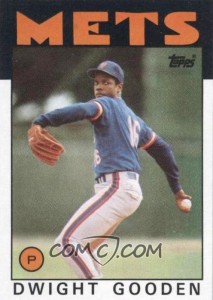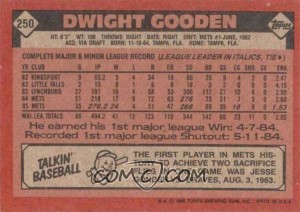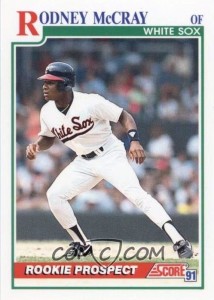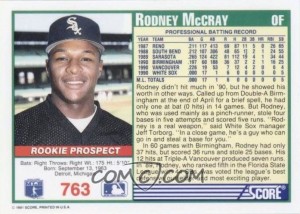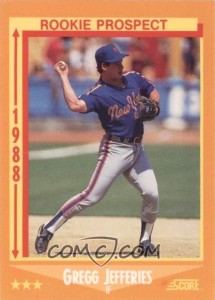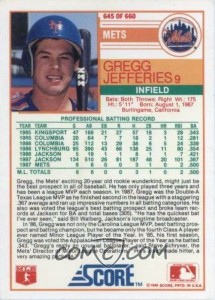The Card
The 1986 Topps set was the beginning of my youthful addiction to baseball cards. I remember being 11 years old and riding my bike to the 7-11 and buying Rack Packs off the shelf. The best part of the Rack Packs were that you could see the front and back card in the pack in all three “packs”. I remember sitting in the aisle at the 7-11 looking through all of the packs, trying to find one with an above average player.
Looking back at the 1986 card now, I think to myself just how much profit Topps must have made back in the day. The card stock is absolutely horrible. You can actually rub the card apart just by placing a little pressure to the face of the card with your thumb, it literally wants to fall apart. If there is a PSA 10 1986 Topps card, I would love to see it.
The fun thing about the 1986 set, though, was the massive block lettering at the top. Topps didn’t care if the team name was Reds, Mets, Cardinals, or White Sox. They were going to attempt to jam it to the width of the card.
The front of the card shows Gooden in full pitching motion, just off-centered, almost like you would be a right-handed hitter facing the Doctor. Looking at the card now, I wonder if he is actually on a mound or just tossing warm up in the outfield. He doesn’t seem to be overly concerned or straining with what he is doing here.
It has been 25 years since I found my first Gooden card, sitting four packs back deep on the rack and on the back of the third rack pack. I hadn’t even seen the card before. I just saw the name Dwight Gooden #250 on the back. I didn’t open that pack, nor did I see my first Gooden “front” to the card, until roughly two months later when I found him in another pack. I had that pack for many years until I traded the pack with a buddy for a box of 1989 Upper Deck.
I have always had a love/hate relationship with the back of the 1986 Topps card. I love the design, but again the card stock was just so bad that I had a hard time reading it. They would flake, fade, or have a massive gum stain that would make it very hard to enjoy. The “Talkin’ Baseball” section always had something completely useless for the player and it took up roughly a third of the back. Who cares that Jesse Gonder was the first Mets player to get two sacrifice hits in a game in 1963? Not me.
The Player
Most people have heard the story of Gooden. And, I don’t think we need to hear again that substance abuse derailed what could have been a truly amazing career.
The Triple-A team where I grew up was the Minor League franchise for the Mets. I followed them closely. I was a Mets fan and Gooden was one of the faces of the franchise.
I will tell you being a Mets fan all of my life, he is my second favorite Mets player behind Mookie Wilson. He dominated from 1984 to 1989 reaching 100 wins at the age of 24. He would go on to win another 57 games in a Mets uniform over the next five seasons all before the age of 30. Then the wheels fell off and we know most of the rest of the story.
He bounced around four more franchises from 1996-2000 before pitching his last big league game at 35.
Since retiring, he’s had all sorts of legal trouble. DWI, punching his girlfriend, hit-and-run, and violating his probation.
I follow him on Twitter, and he seems to be at least soberish. Not really sure what he is up to other than posing with Jim Brown.
